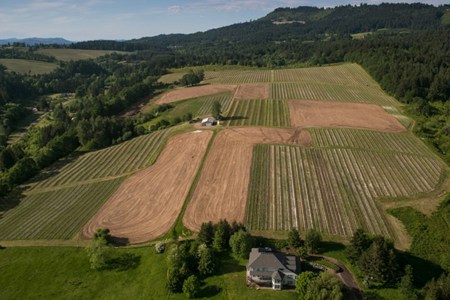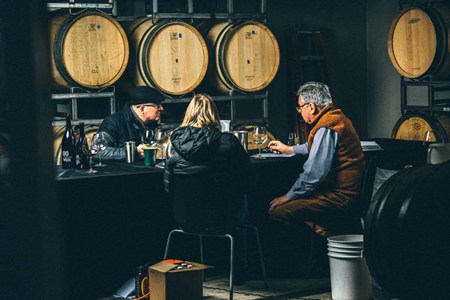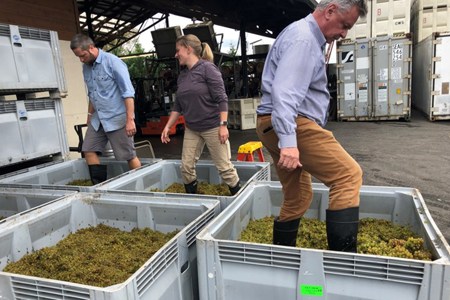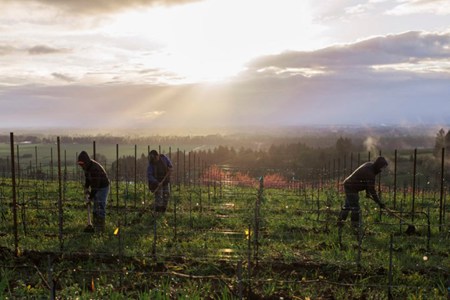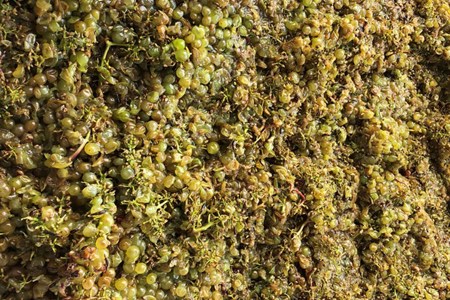00 Wines
00 Wines Gallery
For American wine lovers, Oregon’s Willamette Valley has long been synonymous with Pinot Noir. In fact, the home page of The Willamette Valley Wineries Association proudly proclaims in large type: “We Are Pinot Noir.”
But some believe that Chardonnay has even greater potential here. We’ve been in the Chardonnay camp ever since we tasted the first vintage of Evening Land’s two Seven Springs Vineyard Chardonnays more than a decade ago. Those wines were the most exciting American Chardonnays we’d ever tasted, coming eerily close to great White Burgundy.
Chris and Kathryn Hermann went us one better. Not only did they believe in Chardonnay’s greater potential, they did something about it, becoming the Willamette Valley’s great Chardonnay specialist. And they did it the right way, identifying the valley’s greatest Chardonnay terroirs, focusing not only on the right soils, but also on the right clones. Dominique Lafon was among those who encouraged them, calling Willamette Valley Chardonnay “the best in the New World.”
Quietly, Chris and Kathryn began sourcing small amounts of fruit from a Who’s Who of Willamette vineyards, including Seven Springs, Chehalem Mountain, Eola Springs, Hyland and Open Claim—each its own ideal combination of exposure and Jory volcanic basalt and oceanic sedimentary soils.
But the Hermanns still had to crack the code for how to make Chardonnay that expresses the nuances of its terroirs, but with the texture and longevity of the great white Burgundies. As Chris told The Wine Advocate’s Erin Brooks, “I didn’t know how one takes Oregon fruit and creates something that has an echo of White Burgundy, especially the textural component. What makes Coche-Dury and Roulot what they are?"
Past is Prologue
In their inaugural 2015 vintage Chris and Kathryn made a total of 600 cases of wine. By 2016, when they made 1200 cases, they’d settled on a winemaking regime that’s straight out of Burgundy. And by the 2017 vintage, with a total of 2000 cases made, word really began to spread that they were on to something. Not only were they receiving 95, 96 and 97 point ratings throughout their portfolio, but one of their wines had been called "the best domestic Chardonnay ever made."
The project’s success was in a way pre-ordained. A second-generation Oregonian, Chris spent more than three decades doing vineyard deals as a lawyer in the Willamette Valley, learning its terroirs and its vineyards like the back of his hand. As a child, his father, a renowned plant geneticist at Oregon State, took him around to meet all the early Oregon greats. Talking with him is like going to class on the history of Oregon winemaking over the past 50 years.
“This is about pushing Chardonnay to its capacity.”
- Chris Hermann
Chris had had the dual privilege of drinking David Lett’s pioneering Eyrie Chardonnays from the 1960s, while spending his entire adult life drinking great White Burgundy. And so he had a sense of the possibilities. In fact, the name “Double Zero” comes from numerology, with zero representing an absence of limits, and double zero further emphasizing the limitless potential of their work.
In short, Chris and Kathryn weren’t satisfied just making excellent Oregon Chardonnay. They wanted the kind of magic you get in a glass of Roulot or Coche. And to get it, they linked up with one of the most brilliant winemakers in Burgundy, Pierre Millemann.
Black Chardonnay
When Millemann began advising the Hermanns in 2015, he introduced them to “Black Chardonnay,” a winemaking technique that originated in Burgundy sometime in the early 20th century.
At the heart of the technique, in the hours after harvest, the grape must is exposed to a great deal of oxygen, which of course is contrary to how many in Burgundy and elsewhere handle Chardonnay today. In response to Burgundy’s battle with “premox” over the past quarter century, most winemakers handle Chardonnay with kid gloves, gently pneumatically pressing it and protecting it from oxygen by using nitrogen and sulfur.
But the Black Chardonnay method championed by Millemann—and used by Coche-Dury, Roulot and a handful of other White Burgundy greats—takes exactly the opposite approach. Double Zero’s Chardonnay is picked fully ripe, but at relatively low sugar levels, and the whole clusters are foot-crushed, chilled and macerated overnight. It then sees a long “heavy press cycle” with no sulfur additions.
The intent is maximum extraction of phenolics from the skins and seeds, capturing the essence of terroir and vintage in their aromatics and texture. The must goes into the press pan and immediately turns dark brown to black through oxidation of the molecules from the skins, hence the method’s name.
Protecting Against Oxidation
This dark must is then put into tanks in which the phenols then perform their next magical function: they are the major oxygen-consuming component in the must, and when they fall out of suspension, they take the dark color and oxidation with them.
The result is juice that—while retaining all of the complex aromatics, flavors and texture from the phenols—is astonishingly oxidation-resistant and fresh. The must goes straight to barrel, retaining all but the gross lees, for native-yeast fermentation and aging. The top wines develop for 18 months in barrel, gaining in complexity and richness of texture through contact with the thick layer of lees.
As Chris told The Somm Journal’s Michelle Metter, “It’s an incredible dance between human ideas and nature’s gifts. For us, this is about pushing Chardonnay to its capacity [and] producing distinctively textured and aromatic wines in a relentless pursuit of the extraordinary.”
The proof of their success is in the bottle. In their purity and diversity of expression, these are among the most exciting Chardonnays (regardless of origin) we’ve ever encountered.
